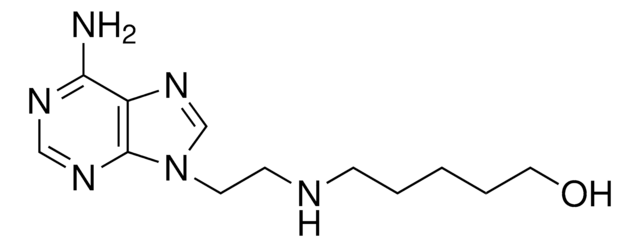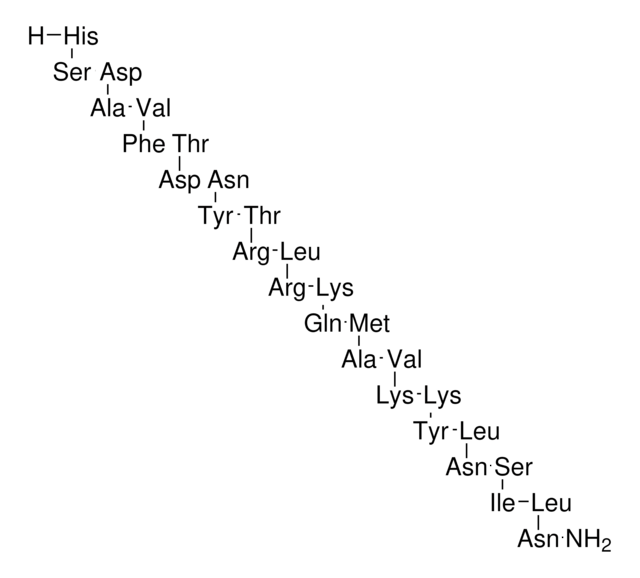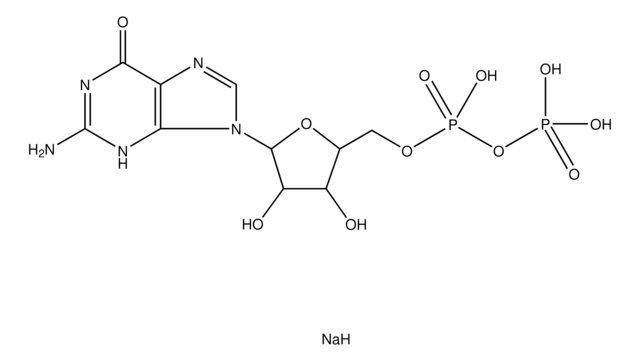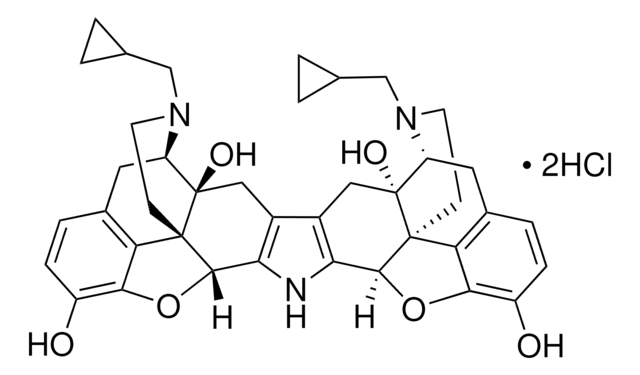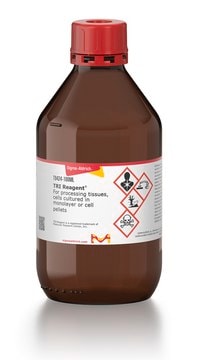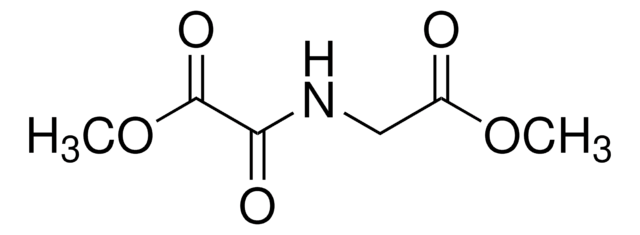Wszystkie zdjęcia(1)
Kluczowe dokumenty
A1439
Pituitary adenylate cyclase activating polypeptide-38
Synonim(y):
PACAP-38
Zaloguj sięWyświetlanie cen organizacyjnych i kontraktowych
About This Item
Wzór empiryczny (zapis Hilla):
C203H331N63O53S
Numer CAS:
Masa cząsteczkowa:
4534.26
Numer MDL:
Kod UNSPSC:
41106305
NACRES:
NA.32
Polecane produkty
Postać
powder
Poziom jakości
skład
Peptide content, ~70%
numer dostępu UniProt
temp. przechowywania
−20°C
informacje o genach
human ... ADCYAP1(116)
Amino Acid Sequence
His-Ser-Asp-Gly-Ile-Phe-Thr-Asp-Ser-Tyr-Ser-Arg-Tyr-Arg-Lys-Gln-Met-Ala-Val-Lys-Lys-Tyr-Leu-Ala-Ala-Val-Leu-Gly-Lys-Arg-Tyr-Lys-Gln-Arg-Val-Lys-Asn-Lys-NH2
Opis ogólny
Pituitary adenylate cyclase activating polypeptide-38 (PACAP38) is mapped to human chromosome 18. 27-residue-amidated fragment (PACAP27) comprises another isoform. The PACAP38 is major isoform associated with mammals.
Zastosowanie
Pituitary adenylate cyclase activating polypeptide-38 has been used to test its effect in stimulating the formation of cyclic AMP hypothalamus and cerebral cortex slices of chicken and to treat glioblastoma cells (U87MG) in cell migration assay to test its anti-invasive effects.
Działania biochem./fizjol.
Pituitary adenylate cyclase activating polypeptide-38 (PACAP38) is a cardioprotectant and may help in treating radiation-induced heart disease (RIHD). It plays a protective role during oxidative stress in cardiomyocytes. PACAP38 has antioxidant, anti-apoptotic and anti-inflammatory property. It is implicated in the pathophysiology of migraine and cluster headache.
PACAP-38 is a neuropeptide that has substantial sequence homology to vasoactive intestinal peptide (VIP). It is reported to serve as a neuronal survival factor.
Inne uwagi
Lyophilized from 0.1% TFA in H2O
Ta strona może zawierać tekst przetłumaczony maszynowo.
Kod klasy składowania
11 - Combustible Solids
Klasa zagrożenia wodnego (WGK)
WGK 3
Temperatura zapłonu (°F)
Not applicable
Temperatura zapłonu (°C)
Not applicable
Środki ochrony indywidualnej
Eyeshields, Gloves, type N95 (US)
Certyfikaty analizy (CoA)
Poszukaj Certyfikaty analizy (CoA), wpisując numer partii/serii produktów. Numery serii i partii można znaleźć na etykiecie produktu po słowach „seria” lub „partia”.
Masz już ten produkt?
Dokumenty związane z niedawno zakupionymi produktami zostały zamieszczone w Bibliotece dokumentów.
Klienci oglądali również te produkty
J Kinhult et al.
The European respiratory journal, 15(2), 243-247 (2000-03-08)
Pituitary adenylate cyclase-activating peptide (PACAP) 38 displays several biological activities relevant to obstructive airway disease. In this study, the occurrence of PACAP 38 in human small bronchi and corresponding pulmonary arteries was analysed immunocytochemically. The dilatory effects of this peptide
T Dickinson et al.
Neuropharmacology, 38(1), 167-180 (1999-04-08)
Peripheral nerve damage often results in the development of chronic pain states, resistant to classical analgesics. Since vasoactive intestinal polypeptide (VIP) and pituitary adenylate cyclase-activating polypeptide (PACAP) are up-regulated in dorsal root ganglion cells following peripheral nerve injury, we investigated
K Tornøe et al.
American journal of physiology. Endocrinology and metabolism, 279(6), E1413-E1425 (2000-11-30)
The concentration of pituitary adenylyl cyclase-activating polypeptide [PACAP-(1-38)] in porcine adrenal glands amounted to 14 +/- 3 pmol/g tissue. PACAP immunoreactive (PACAP-IR) fibers innervated adrenal chromaffin cells (often co-localized with choline acetyltransferase). Subcapsular fibers traversed the cortex-innervating endocrine cells and
Bernadett Tuka et al.
The journal of headache and pain, 17(1), 69-69 (2016-08-01)
Activation of the trigeminal-autonomic reflex, involving the trigeminal ganglion, the superior salivatory nucleus and the sphenopalatine ganglion (SPG) is crucial in the pathophysiology of cluster headache (CH). Since pituitary adenylate cyclase-activating polypeptide-38 (PACAP-38) is present both in the SPG and
A J Martínez-Fuentes et al.
Endocrinology, 139(12), 5116-5124 (1998-12-01)
We have recently shown that the two bioactive forms of pituitary adenylate cyclase-activating polypeptide, PACAP38 and PACAP27, stimulate GH release and GH messenger RNA (mRNA) accumulation in cultured porcine pituitary cells. However, dose- and time-related differences in the response to
Nasz zespół naukowców ma doświadczenie we wszystkich obszarach badań, w tym w naukach przyrodniczych, materiałoznawstwie, syntezie chemicznej, chromatografii, analityce i wielu innych dziedzinach.
Skontaktuj się z zespołem ds. pomocy technicznej